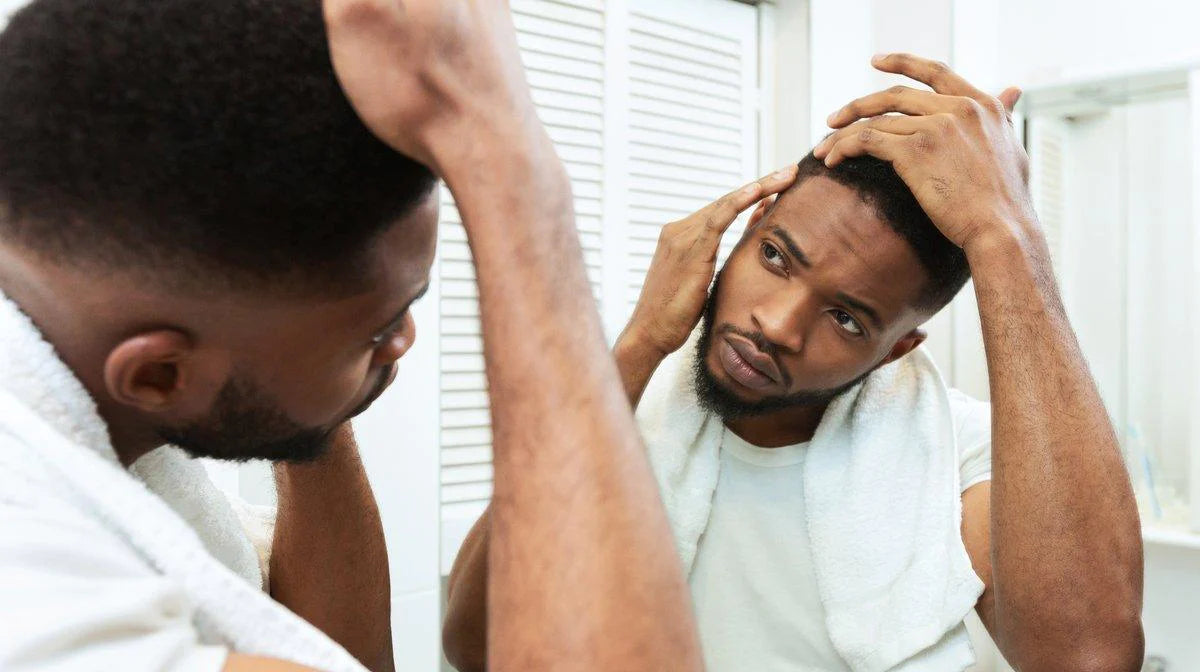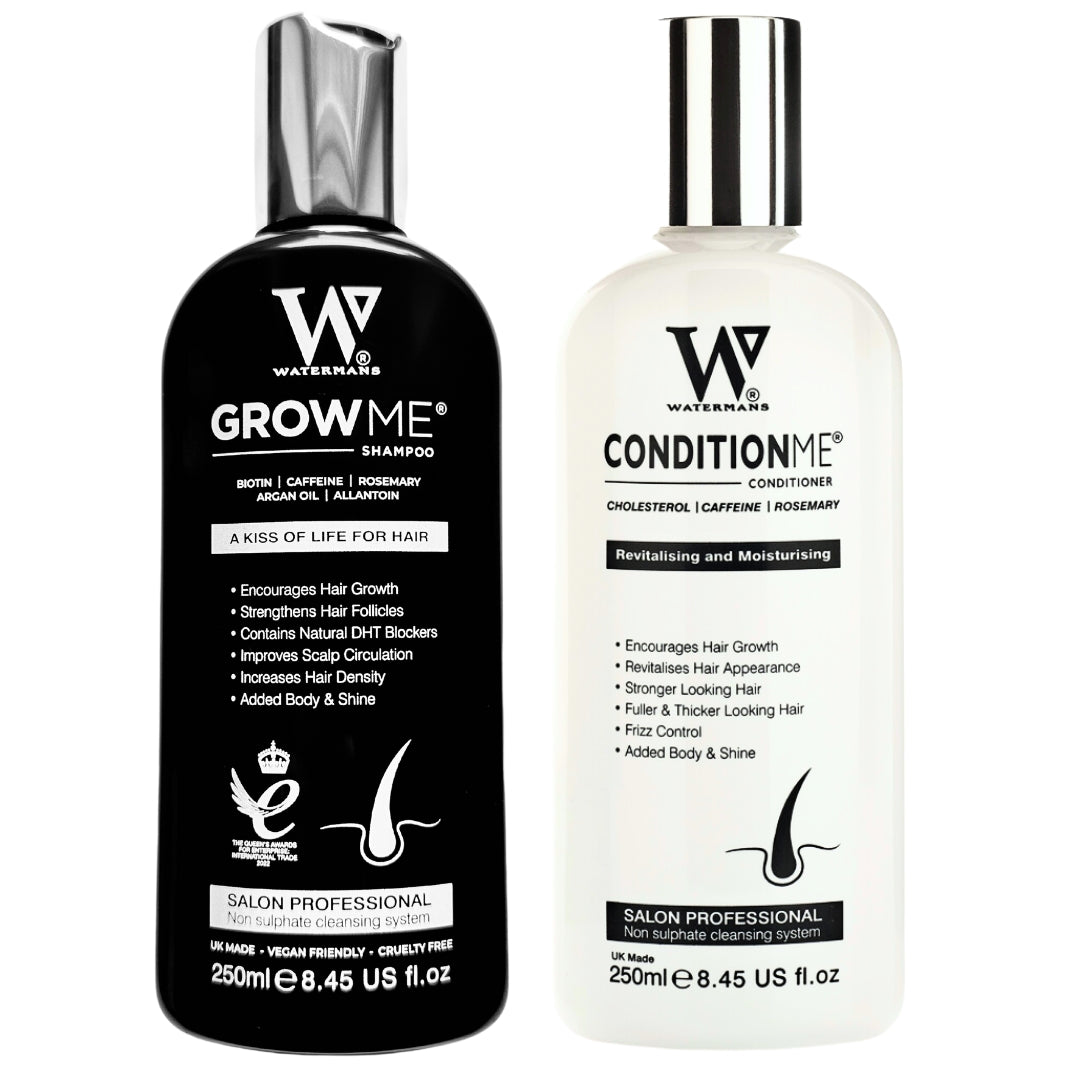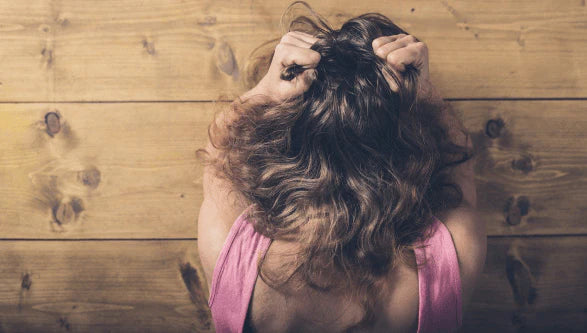
Pattern Hair Loss: What Is It and What Causes It?
Pattern hair loss is a condition that can affect anyone at any age. Also known as hair thinning, androgenic alopecia or pattern balding, this condition can stump hair’s natural growth. With that in mind, we’ve put together the perfect guide that explains everything you need to know about pattern hair loss and how to help slow the condition down to maintain healthy hair.
What Is Pattern Hair Loss?
While we naturally lose between 50 and 100 hairs a day, pattern hair loss is identified by the thinning and shrinking of hair follicles. With each growth cycle, strands grow back thinner and shorter until, eventually, follicles stop producing hair altogether.
What Causes Pattern Hair Loss?
From hormonal changes to genetics, multiple factors can cause pattern hair loss – but it’s worth noting that these can vary from gender to gender.
Male Pattern Hair Loss
Did you know that over 85% of men experience male pattern hair loss before they reach the age of 50?
Male pattern hair loss is caused by follicle sensitivity to hormones – notably dihydrotestosterone (DHT), the hormone responsible for hair. The hair follicles’ sensitivity is triggered after puberty, when testosterone is produced.
The severity of the pattern hair loss depends on the sensitivity to the androgens (male hormones). The more sensitive the follicles are, the more severe the hair loss will be.

Female Pattern Hair Loss
Female pattern hair loss, on the other hand, is not as common – but that doesn’t mean pattern hair loss in women doesn’t happen. Over 20% of women under 50 experience hair thinning, while 65% struggle with the condition after menopause.
Female pattern hair loss is triggered by the same hormone as male pattern hair loss – DHT. However, unlike men, women rarely go bald from the condition.
Other factors that can trigger female pattern hair loss include hormonal imbalances (caused by conditions like polycystic ovary syndrome (PCOS hair loss) or the use of contraceptive pills (one to bear in mind).

What Are the Stages of Pattern Hair Loss?
Male Pattern Hair Loss Stages
If you’re concerned that you’re losing more hair than usual and are trying to figure out if you have pattern hair loss, here are seven stages that will help you to identify male pattern hair loss.
- No significant hair loss or recession of the hairline.
- Slight recession of hairline around the temples.
- First signs of significant balding appear. This could be at the temples or significant hair loss on the scalp.
- Hairline recession is more severe and there is hardly any hair on the scalp.
- Two areas of hair loss (hairline and scalp) become more severe. A thin band of hair separates the two areas.
- The band of hair separating the balding hairline and scalp is lost or sparse.
- The most severe stage of pattern hair loss, where a band of hair around the side of the head remains. The scalp is bald.
Female Pattern Hair Loss Stages
Stages of female pattern hair loss include thinning around the parting and loss of volume all over. You’ll be happy to know that it’s rare for female pattern hair loss to result in balding.
Is There a Cure for Pattern Hair Loss?
Sadly, there is no exact cure for pattern hair loss. However, seeking the right treatment early can help hair retains its vitality and fullness for longer.
Pattern Hair Loss: Treatment Options
Here are a few different treatment options available to help slow hair loss and boost hair’s health:
- Anti-androgenic medications
- Topical hair follicle stimulants – for example, minoxidil (Regaine)
- Topical anti-androgen creams
However, pattern hair loss cases can vary, so, before jumping into treatments, we recommend speaking to a GP or specialist about the best course of action for you.













